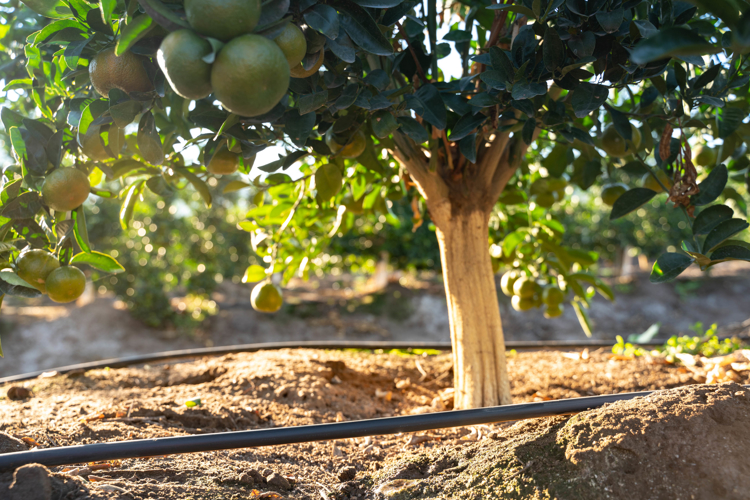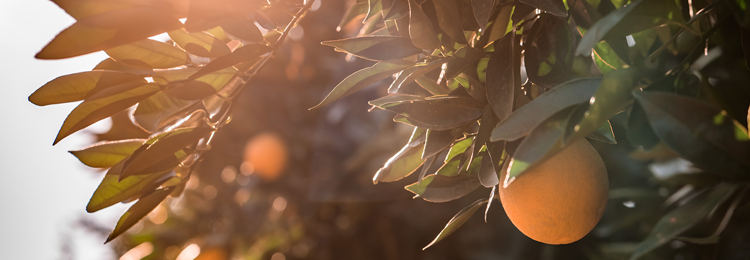Focus points for drip on citrus
The concept of open hydroponics has been a major driver of the adoption of drip irrigation in citrus production. Open hydroponics in the context of tree crops was first introduced by Professor Rafael Martinez Valero of Spain in the 1990’s. His work and related research carried out in South Africa has greatly changed thinking in citrus irrigation and nutrition.
The open hydroponics concept focuses on increasing productivity through intensified irrigation and nutrition practices. Over time, this concept has been adapted to South African conditions.
“Fertigation has made a massive contribution to the popularity of drip irrigation on citrus and other tree crops,” says Chris Malan, agronomy manager at Netafim South Africa. “Concepts of open hydroponics are used to promote more efficient use of water and fertilizers. Drip irrigation and fertigation create benefits for citrus production as it allows the farmer to better control a few major processes, such as water and mineral availability, distribution and uptake, as well as root activity.
He says there has been a steady increase in the number of citrus orchards established in South Africa with drip irrigation over recent years. This is mainly due to improved drip irrigation and fertigation technology and products, agronomic support, on-farm managerial skills and increased pressure on water resources.
Further development of drip irrigation on citrus has been driven by the availability of low flow drip irrigation and the concept of ‘Centralised Low Flow Drip Fertigation. “South African citrus producers are world leaders in this regard,” says Malan.

Changed approach
Experience with drip irrigation on citrus has shown that the principles traditionally applied for conventional irrigation do not necessarily apply for drip irrigation, or other localised irrigation methods, such as micro-sprinkler irrigation. “We have to change our approach to successfully implement drip irrigation in citrus and other fruit tree orchards,” says Malan.
There are a few prerequisites to successful drip irrigation, the most important of which is a well-established deep root system. This can only be obtained through proper soil preparation.
Malan adds that, in order to succeed with drip irrigation, it is further essential to fertigate through the system; think in terms of concentrations rather than amounts of fertilizer application; irrigate at frequent intervals according to scheduling principles; adopt the correct type of emitters and spacing for the soil type and topography and control the irrigation depth. Thorough planning and preparation are required for successful drip irrigation. Two of the important parts of this are soil preparation and scheduling calculations.
Malan shares principles* for preparation and management, to help achieve very efficient use of water, accurate irrigation volumes and finally optimal tree performance.
The four most important activities:
- > Establish the soil’s water holding capacity and the optimal percentage extraction of the readily plant available water for each phenological stage of the tree. This is to establish the amount of water that needs to be applied per irrigation cycle. Read more here.
- > Calculate the length of the irrigation cycle by using the calculated delivery rate in mm/hour.
- > Calculate how long the period between irrigation cycles must be by using the ETo, Kc and amount of water needed per cycle.
- > Check the soil water content regularly and make adjustments if necessary, to avoid gradual trends of under- or over-irrigation.
* This is a very basic rendition of principles discussed by Pieter Raath, Chris Malan and Teunis Vahrmeijer in the article, Irrigation of citrus trees: A practical approach, first published in the South African Fruit Journal. Read the article here.
Benefits of drip
Reported benefits of drip in South African citrus orchards include low maintenance requirements, high fertilizer use efficiency and lower electricity use. “We have seen the highest production per unit of water used for citrus as well as the lowest electricity use per unit of fruit produced in drip irrigated citrus orchards. Tree growth is faster, which leads to an improved harvest index.”

Share your thoughts
Comments
We'd love to hear your thoughts! To enter a comment, type your name and email address.